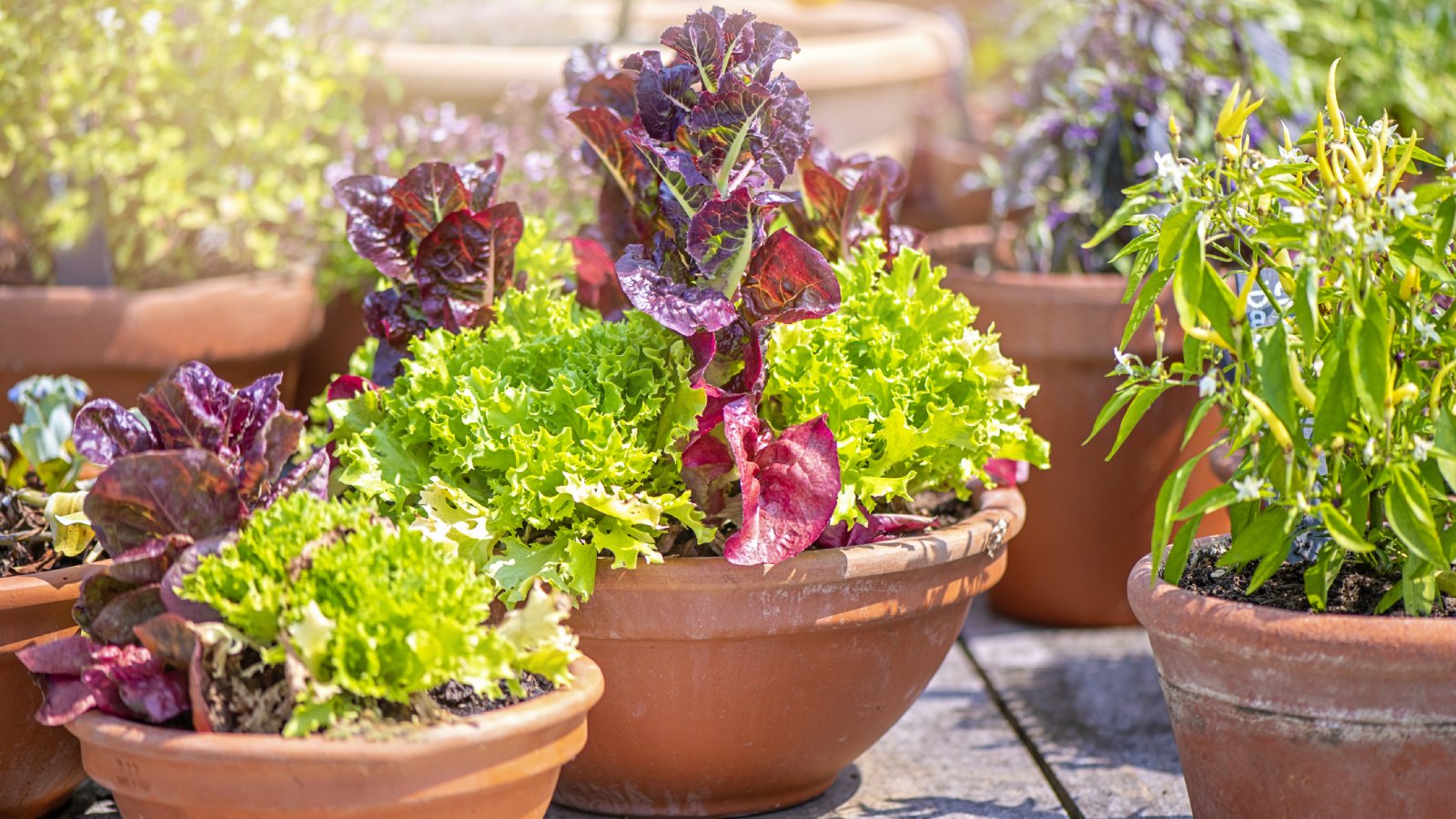Foodscaping Ideas For Containers – How To Try Edible Landscaping In Even The Smallest Spaces
Grow edibles and ornamentals together even if you don't have a big garden. Try foodscaping in containers this year!

We have lots of foodscaping ideas. Urban foodscaping, or interweaving ornamental plants with food crops, can be done without the benefit of a large garden. For those with little garden space, an edible container garden does double duty, making it possible for anyone with room for a pot of soil to grow flowers, herbs and other edible plants.
Gardening has become an incredibly popular pastime. For some, it’s an artistic outlet, and for others a way to stretch the food budget, but there’s no reason you can’t have both. Keep reading to learn about edible container gardening.
What Is Foodscaping?
Foodscaping is a modern term for the commingling of ornamentals and edible crops in the landscape. It differs from having a vegetable garden or mini orchard in that it's all about blending the two together.
When foodscaping is practiced in container gardens, it succeeds in maximizing space. And the good news is that there are likely hundreds if not more, of combinations that will work when foodscaping in containers.
Foodscaping Considerations
First, consider the needs of the plants. Most, but not all edible plants need 6-8 hours of full sun. If you find you have less sun exposure, some options might be to grow leafy greens like collards, kale, lettuce, Swiss chard or spinach. Root crops like carrots and beets can also be grown in partial sun as can broccoli, cauliflower, and cabbage.
Next, you will want to address the type of container you need. Because you will be planting multiple plants in the pot, bigger is better. If you use clay or enamel pots, set them on some rolling wheels so they can be moved around. Plastic or resin pots are a great choice for their lighter weight. Make sure your container has adequate drainage holes.
As far as soil goes, you can make your own or use a good-quality potting soil. Be sure your soil is rich in organic matter and well-draining.
Sign up for the Gardening Know How newsletter today and receive a free copy of our e-book "How to Grow Delicious Tomatoes".
Foodscaping Ideas for Containers
I love to plant perennials, annuals, and food crops together. It makes for an aesthetically pleasing container and there are so many combinations.
Select a single large container or use multiple sizes and heights grouped together. You can spend money on good quality, decorative pots or use repurposed finds. You can even paint or apply broken tile mosaic to terra cotta pots. There are so many ways to make the container look as pretty as the plants inside it.
Foodscaping plants may be a mix of perennials, annuals or herbs or made up of annuals and herbs or just perennials and annuals. Climbing crops like beans or cucumbers can be grown up trellises or you can situate the pot against an existing fence and allow the crop to climb up.
Best Plants for Foodscaping in Containers
When you choose plants for foodscaping in containers, you will need to select those with similar needs. For example if you plant a sun loving tomato, you will need to pair it with additional sun lovers. The same goes for water, soil and fertilizer requirements.
Vegetable Thriller, Filler & Spiller
If you’re going for beauty as well as usefulness, select plants that have varied colors, texture and heights. Also remember the rule of thumb for container planting; use a thriller, filler and spiller.
This means the star of the show and likely the tallest plant is the “thriller”. “Fillers” will be a bit shorter at maturity. Their purpose is to fill the space surrounding the thriller. The “spiller” is there to add drama and as its name suggests, cascade over the edge of the container.
Using the tomato plant as an example, the tomato is the “thriller” and could be combined with a “filler” like colorful coleus and further accented by a creeping Jenny or “spiller”.
Other examples of edible thrillers might be peppers or eggplant or broccoli or cauliflower but you could also grow your own grains like barley, oats or wheat as the focal point of the container.
Surround the thriller with angelonia, plectranthus, mustard, cabbage, kale or ornamental flowers like pansy, snapdragon, or viola.
Spillers might consist of sweet potato vine or trailing petunia or oregano, thyme or creeping rosemary. For that matter, you could fill an entire container with varying herbs with like requirements.
There are so many other options, the choice is up to you and that’s the fun part. The following crops do well when grown in containers: beans, blueberries, carrots, cucumbers, kale, lettuces, onions, peas, peppers, potatoes, radishes, strawberries, spinach, squash, Swiss chard and tomato. Then the skies the limit on fillers and spillers. Have fun!

Amy Grant has been gardening for 30 years and writing for 15. A professional chef and caterer, Amy's area of expertise is culinary gardening.
